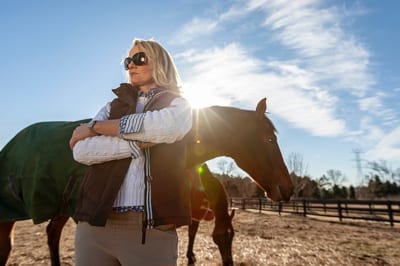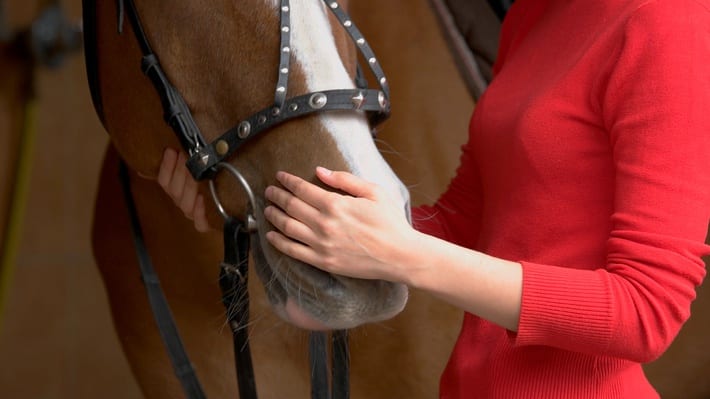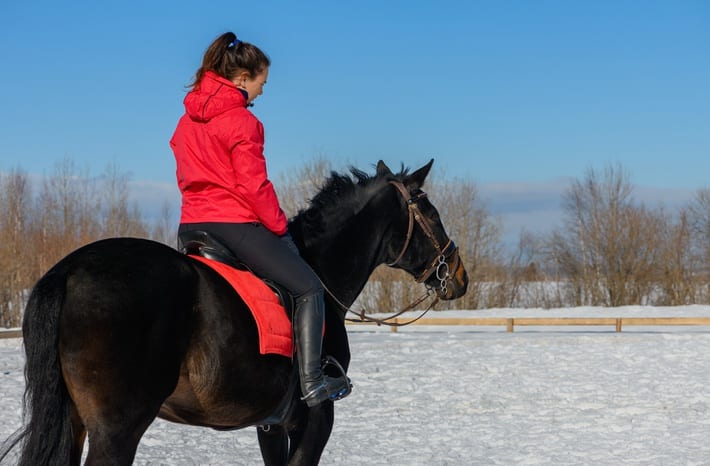 In some ways, horse racing is one of the sports industries in which representation isn’t so much of an issue. Compare and contrast it with, say, football or darts, and you’re far more likely to see a lack of equality in those sports. Yet horse racing isn’t without problems of its own. We’ve written about the issues facing female jockeys elsewhere on this site, for example, with men far more likely to be given a ride even if women are statistically just as likely to win races if given the same quality of horse to work with.
In some ways, horse racing is one of the sports industries in which representation isn’t so much of an issue. Compare and contrast it with, say, football or darts, and you’re far more likely to see a lack of equality in those sports. Yet horse racing isn’t without problems of its own. We’ve written about the issues facing female jockeys elsewhere on this site, for example, with men far more likely to be given a ride even if women are statistically just as likely to win races if given the same quality of horse to work with.
Are things any different for trainers? There’s no reason why the physicality of the job would be any different for male trainers than for female ones, so there’s no logical explanation for a lack of representation on that front. Indeed, some of the best trainers in the business are females and have enjoyed numerous successes over the years. Who, then, are the biggest female trainers and what have they achieved during their careers? They’re the questions that we’re looking to answer on this page.
What Is a Horse Trainer?

Before we look into the experience of female trainers in the horse racing industry, what exactly does it mean to be a trainer? A head trainer is the person responsible for things, such as running the stables, managing staff and looking after a horse’s training schedule in order to prepare them for a big race. They’re also the person that will be the most aware of a horse’s welfare.
Trainers will work around forty-five hours a week, earn anywhere between £15,000 and £45,000 a year on average, though the best ones will obviously earn more than this, and tend to start their days early. You need to get a licence from the British Horseracing Authority in order to be a professional trainer.
The BHA require people to have gained at least five years’ experience of working in a horse yard and pass pre-licence courses before they’re willing to issue licences. That’s because trainers are responsible for working out a training and exercise routine, as well as monitoring a horse’s development, so it’s not something that just any old person can do.
Key Female Trainers

That being said, whilst not just any old person can train horses, there’s nothing to say that women can’t be just as good at it as men. For that reason, the list of top female trainers is a long one. Here we’ll have a look at some of the main names in the industry.
| Trainer | Runs | Wins | Win % | Places | Place % |
|---|---|---|---|---|---|
| Jessica Harrington | 3416 | 399 | 11.68% | 720 | 21.08% |
| Eve Johnson Houghton | 2318 | 267 | 11.52% | 460 | 19.84% |
| Jane Chapple-Hyam | 673 | 70 | 10.40% | 132 | 19.61% |
| Rebecca Curtis | 633 | 91 | 14.38% | 126 | 19.91% |
| Venetia Williams | 1397 | 187 | 13.39% | 272 | 19.47% |
| Sophie Leech | 873 | 63 | 7.22% | 162 | 18.56% |
| Lucinda Russell | 1745 | 192 | 11.00% | 350 | 20.06% |
Trainer stats for the past five seasons (at time of writing).
Jessica Harrington
Stats Last Five Seasons
| Runs | 3416 |
|---|---|
| Wins | 399 (11.68%) |
| Places | 720 (21.08%) |
* At time of writing.
Born in London as Jessica Fowler on the 12th of February in 1947, she married Johnny Harrington and took on his name. Though she was born in London, she actually grew up in her father’s native Ireland before returning to England when she was 12 in order to attend Hatherop School.
Johnny Harrington was a bloodstock agent and owned a racehorse, with the couple sharing a love for racing. Jessica’s enjoyment of horse racing manifested in her ability as a jockey, earning a reputation as one of Ireland’s most talented three-day event jockeys. Yet it seemed as though she was always destined to make a name for herself as a trainer, earning her permit in 1989.
Whilst she is predominantly known as a National Hunt trainer, Jessica Harrington has seen some of her horses do well on flat. The likes of Bible Belt, Pathfork and Moscow Flyer were some of her best known horses, with the trainer soon racking up victories at all of the major meetings, including at the Cheltenham Festival.
This culminated in the 2017 Cheltenham Gold Cup victory for her with Sizing John. Precisely a year after her Gold Cup success she also watched on as Robbie Power, who had also been the jockey for that Cheltenham win, crossed the finish line first in the Irish Grand National on the back of the Harrington-trained Our Duke.
Eve Johnson Houghton
Stats Last Five Seasons
| Runs | 2318 |
|---|---|
| Wins | 267 |
| Places | 460 |
* At time of writing.
From one of the most established female trainers in the industry to one of the ones rapidly earning a name for herself on the circuit. Eve Johnson Houghton is the daughter of Richard Fulke Johnson Houghton, who trained more than a thousand winners, including two in the St. Leger, before his retirement. When he finally decided to call it a day it was his daughter who took over the reigns at his yard.
As with Harrington, Johnson Houghton began her life working with horses as a jockey and was able to rack up two wins in the Ascot Diamond before hanging up her spurs. From the moment she switched to being a trainer she began to enjoy success and has, at the time of writing, managed to win at least 20 flat races in every campaign that she’s trained horses in since 2010.
It would take her quite some time to catch up with her father’s record at that pace, of course, but it’s allowing her to make a name for herself as one of the top female trainers in the business. Laying down these foundations now will give her the ability to move things up a gear as the opportunities present themselves.
Jane Chapple-Hyam
Stats Last Five Seasons
| Runs | 673 |
|---|---|
| Wins | 70 (10.40%) |
| Places | 132 (19.61%) |
* At time of writing.
Australian by birth, Jane Chapple-Hyam is based in the UK and gained her training licence in 2005. She was married to Peter Chapple-Hyam, who was a well-known trainer himself, but the pair separated before she began her training career. She was 38 when she got her licence, but her relative youth didn’t mean that she lacked ambition and her plan was to quickly establish a stable in Newmarket.
Racing had always been in Chapple-Hyam’s blood, so it was never a surprise that she decided to become a trainer. She gained experience working in Australia and it was enough to earn her that BHA licence, allowing her to fulfil her dream and open a stable in Newmarket that has the Australian flag flying above it. Her love of Newmarket came from her time doing a stud management course there as a seventeen-year-old.
In the years since she earned herself a reputation as a remarkably talented trainer, gaining a 46% ratio of her horses finishing in the top four places in races that they enter, which is as good as pretty much any other trainer in the business. As with so many other Australian sports-people, Chapple-Hyam has a desire to win and doesn’t seem to be willing to settle for second-best.
Rebecca Curtis
Stats Last Five Seasons
| Runs | 633 |
|---|---|
| Wins | 91 (14.38%) |
| Places | 126 (19.91%) |
* At time of writing.
Rebecca Curtis has been a trainer since 2007, but it took her some time to earn the sort of reputation that allows someone to make a list like this. Soon enough she’d got into the swing of things, though, and by the end of her first four seasons as a trainer she’d seen more than one hundred of her horses end up as winners in the races that she entered them into.
This meant that she started to gain the attention of the great and the good in the horse racing world, with none other than JP McManus deciding to bring her on board as a trainer for his horses. Even he probably didn’t envisage how successful she would be, training At Fishers Cross to a Cheltenham Festival and Aintree Festival Grade 1 double in 2013.
She had begun her racing life working with Peter Bowen and moved over to America to learn how they do things with horse training Stateside before eventually returning to her native Wales. At the time of writing, she’s been responsible for more than £1 million worth of wins thanks to a 15% win ratio. Interestingly, her lowest rate of wins between 2015 and 2019 was on National Hunt flat courses, suggesting jumps is where her talent lies.
Venetia Williams
Stats Last Five Seasons
| Runs | 1397 |
|---|---|
| Wins | 187 (13.39%) |
| Places | 272 (19.47%) |
* At time of writing.
The name of Venetia Williams at this point in the list will make clear to those of you in the know that it’s not being written in any particular order. She earned her stripes by working with trainers in the likes of Australia, the United States of America and France, meaning that she’s always had a global flavour to her work. She also earned a reputation as a fearless amateur jockey, being one of the first women of the modern era to take part in the Grand National.
She seems to specialise in horses that favour soft ground and is much better at National Hunt events than flat racing. Born in Cornwall in 1960, Williams has a stables in Herefordshire and gained her own licence in 1995. The horse training world might have deprived of Williams’ work altogether had her 1988 accident as a jockey, in which she broke her neck, been any worse than it was.
Her relationship with the Grand National wasn’t limited to riding in it as an amateur jockey, either. In 2009, she became only the second female trainer after Jenny Pitman to see her horse win it. She described the victory of Mon Mome as ‘unbelievable’, which was probably something of an understatement. Teeton Mill was perhaps the horse that laid the ground work for what Mon Mome would achieve, given that Williams trained it to victories in the Hennessey Gold Cup and the King George VI Chase in 1998.
Sophie Leech
Stats Last Five Seasons
| Runs | 873 |
|---|---|
| Wins | 63 (7.22%) |
| Places | 162 (18.56%) |
* At time of writing.
Sophie Leech became a fully licensed trainer in 2007, taking on her husband Christian as an assistant. That might not seem like a particularly relevant fact, but when you consider that Christian was a British Horseracing Authority handicapper before becoming Leech’s assistant you can see why it’s very relevant indeed. That’s the sort of edge that helps a trainer to get one over on their competitors, understanding why handicappers make the decisions that they make.
She began her training career working on the Point-to-Point circuit, soon taking on a satellite yard for Milton Harris. It was after two years of doing that that she felt confident enough to go for her own licence and she hasn’t looked back since. Initially based in Oxfordshire, she notched up a ratio of one win in ten before relocating to Gloucestershire in 2011. Leech is a prime example of someone who has multiple talents as a trainer, having earned herself a degree in Equine Science in 2001.
Lucinda Russell
Stats Last Five Seasons
| Runs | 1745 |
|---|---|
| Wins | 192 (11.00%) |
| Places | 350 (20.06%) |
* At time of writing.
Born on the 24th of June in 1966 in Edinburgh, Lucinda Russell is the partner of former jockey Peter Scudamore. Based in the Scottish countryside of Kinross, Russell and Scudamore’s partnership has led to more success than any other yard in the history of jump racing in Scotland. That’s what allows her to refer to her Arlary House Stables as ‘Scotland’s leading National Hunt yard’.
Whilst she’s been responsible for more than 700 winners since the start of the 2009-2010 season, it’s the 2017 victory of One For Arthur in the Grand National that saw her truly shoot to prominence. It’s perhaps part of the reason that Lucinda Russell was given an Order of the British Empire for services to horse racing in 2018. In 2019 alone, her yard was responsible for nearly £200,000 in prize money.
Russell and Scudamore are a hardy pair and they’ve had to be. Their time together has been marred by tragedy, with the loss of two stars of their stables in as many months. Brindisi Breeze had been the surprise star of the 2013 Cheltenham Festival, ridden by young jockey Campbell Gillies. Just two months after the big win at Prestbury Park, the horse jumped out is his paddock at night, walked onto the road and was killed by a passing lorry. The following month Gillies went on holiday to Greece, dived into the swimming pool after a night out drinking and died.
The story of Russell’s success tinged with tragedy is representative of so many in the horse racing industry. Jockeys know every time that they take to the track that there’s a risk to their lives and well-being if things were to go horribly wrong, but for Gillies to lose his life in such a tragic way away from the track must have been doubly difficult to cope with. The same is true of horses racing on difficult terrain and never knowing what might happen, making the tragedy of Brindisi Breeze even more painful. That’s horse racing, though. That’s the side of being a trainer they don’t tell you about in the prospectus.